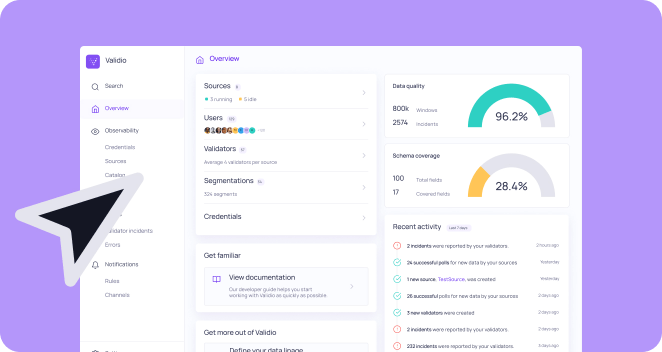LogMeIn went public in 2012, in what many perceive as the first B2B SaaS IPO with a true product-led growth model. This triggered a mindset change in B2B SaaS — changing the perception of the old-school “Oracle” top-down enterprise sales playbook (a dark time in tech history where almost all deals included wining and dining with C-level buyers) — to a more end-user-obsessed, adoption-led sales playbook.

So in a nutshell PLG has to a large extent emerged because buying centers have shifted during the past 5–10 years from CxOs to executives to the actual end-users of solutions. Selling to end-users requires a bottoms-up distribution model where the individuals can discover, evaluate, and buy the technology on their own. Subsequently, the product must speak for itself and provide some level of concrete value before people start paying for it.
As we’ve seen during 2020 and 2021 a massive acceleration of software IPOs with premium multiples that deploy different levels of PLG (Snowflake, Atlassian, Confluent, UiPath, Monday.com, Squarespace to name a few), top VCs have started to take notice:
- Tomasz Tunguz predicted that in 2021 “product-led growth will become the standard GTM for software and infrastructure companies.”
- Bessemer called product-led growth one of “three GTM strategies top cloud companies employ in the New Normal” in their State of the Cloud 2021 report together with usage-based pricing and the adoption of cloud marketplaces.
- David Ulevitch, General Partner at a16z, highlighted earlier this year that PLG is one of the trends their most excited about at a16z, noting that “many of the fastest-growing and visionary companies today are product-led because it’s such an efficient distribution channel that aligns incentives between a company and its customers.”
PLG companies trade at higher multiples than companies deploying a more traditional top-down GTM motion. A recent example is Monday.com, which went public earlier in 2021, trading at a 40x EV/ARR trailing multiple. Why is this the case? PLG companies are able to create happier customers with better unit economics and faster growth once they’ve crossed the chasm.
PLG is much more than a pricing model that either has a free, freemium, free trial or open-source component. However, consumption-based pricing (e.g. utility-based) pricing inherently requires PLG, as at any time the customer is disappointed in the product they can stop using it and move on.
Let’s dissect a bit deeper what this massive shift towards PLG actually means, bust some myths and give some concrete advice based on our experience.
🤝 PLG — the end of sales?
One big (and not so well-kept) secret is that PLG does not mean the end of sales teams.
Instead, PLG just means that we need to reimagine sales: PLG changes the role of sales and customer success, blurring the lines between the two.
In a PLG context, the sales org must take into consideration how people are already using the product and the frequency of use to determine if a sale is probable. This leads to sales reps who care less about marketing qualified leads and care more about product qualified leads. Sales has to act as a consultant to encourage adoption even before a credit card is swiped.
Subsequently, for startups applying usage-based pricing, sales compensation can’t solely be based on net new logo sales but also on consumption. In turn, what has traditionally been perceived as the responsibility of the customer success team, i.e. encouraging product usage and upselling, is cross-pollinating with sales. Market leaders such as Snowflake have even started to blow up the customer success function as we traditionally know it in software.
Often the role of sales is even more important and complex in PLG companies than in traditional enterprise software companies. Because sales teams are responsible for expanding customers, many PLG companies have sales teams stay in touch with customers over several years to make sure they’re in a position to upsell, cross-sell and expand revenue.
So when is the right time to add a sales team layer as a PLG startup?
Even for non-PLG companies, pre-product-market fit sales should be founder-led to keep the market-product feedback loop as tight as possible.
This is even more true for PLG companies, where the product is responsible for nailing acquisition, retention, conversion, and even referral for the initial segment of customers. If you don’t have product-market fit, layering on sales — which leads to a very high CAC — will result in a leaky bucket. Sales will be frustrated, and people will most likely leave the startup. Some say that your first 10 customers should be founder-led sales, some say your first 20. This doesn’t matter, the only thing that is for sure is that bringing anything else than a few technical renaissance reps in before you’ve achieved product-market fit will add a lot of stress on the organization and end up costing a lot, especially if you bring in too early a senior VP of Sales who is used to scaling startups from $5M ARR to $20M, $50M or $100M ARR but not from $500k to $5M.
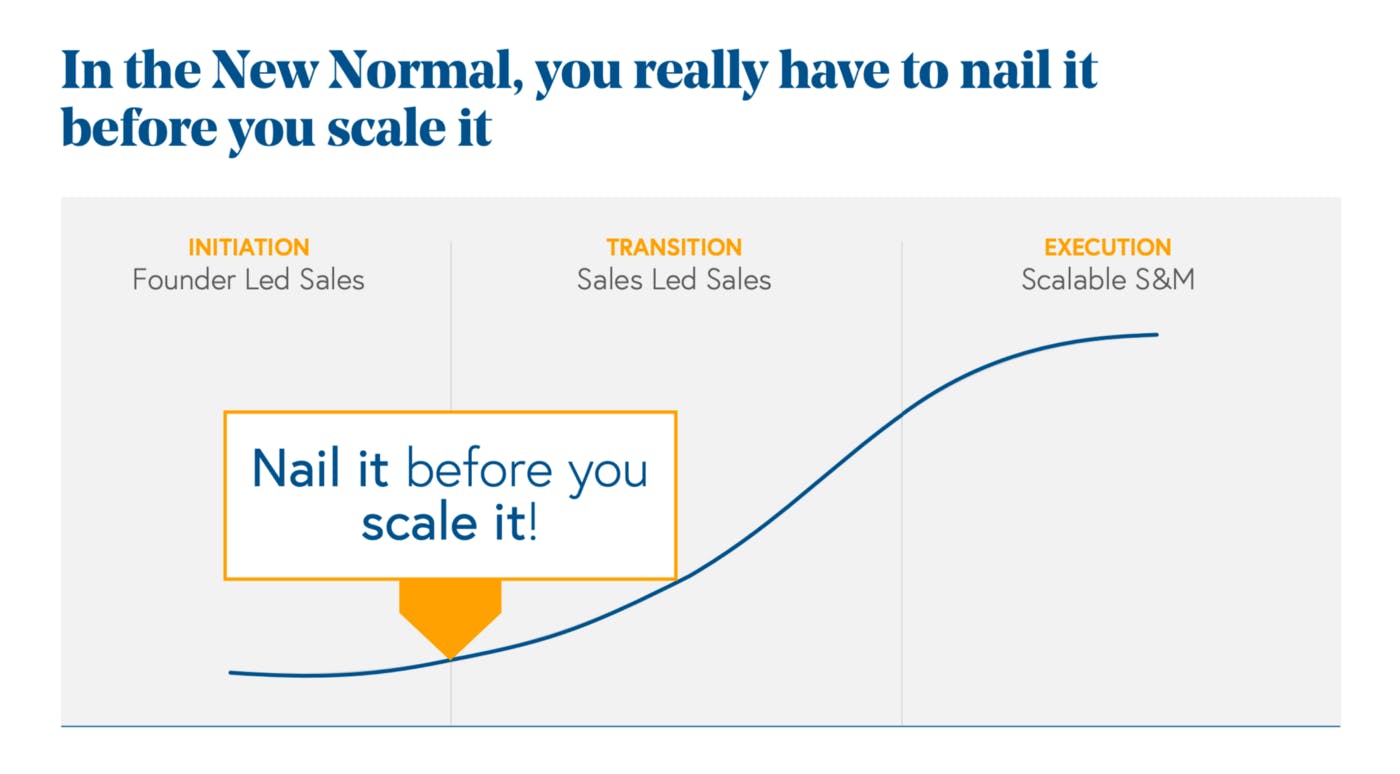
At this point, it’s important to define what I mean by product-market fit. There’re many ways to define product-market fit and it’s an elusive term in the world of VC and startups. The way I’d define it from a B2B SaaS perspective comes down to one fundamental criterion: revenue and/or user retention. Have you proved that you’ve been able to sell a product to a customer cohort and that they continue to use your product and ideally expand the usage? This doesn’t mean that you yet have to be able to do it in a scalable way all over the world or that you’ve done it at the ideal price point. But you’ve proven that there’s a need for your product and there are people out there who want it. This is when you’ve achieved early product-market fit in my books.
There are 5 crucial questions as a PLG startup founder that you need to ask yourself before layering a sales team in your org chart:
- Do you have product-market fit
- Do you need sales to mitigate customer drop-off in the user journey
- Has your company reached the limits of PLG — e.g. you can’t grow (new or existing accounts) without a sales team
- Do you need sales to more effectively target specific customer segments — there might be customer segments who are used to sales and won’t find or buy from you without a sales team
- Do you need sales to improve company metrics such as LTV, Net Revenue Retention Rate, ARPU or Net Churn
If you answer yes to 3 or more of these questions, then timing is most likely ripe to think about adding sales to your org chart. By this time you most likely also already have some kind of repeatable sales playbook achieved with the founders and maybe a renaissance rep.
Most PLG startups usually hire sales later rather than earlier, and when they do, it’s pivotal for improving the product, the customer experience, and the startup itself.
📝 The importance of Product Marketing early on
The product marketing leader is the first commercial hire most PLG startups should recruit (especially those with technical target users such as developers or data engineers), and often the first key mishire.
I’ve spoken with a lot of people who either have invested early on in PLG startups or been core operators at PLG startups. All of them say that the first unicorn commercial hire to aim for is someone with a mix of product marketing and demand gen experience.
Product marketing is the vital work of developing e.g. a customer lifecycle journey, pricing, sales support materials, and community. Demand generation consumes the outputs from product marketing and injects them into marketing machinery that delivers content to prospects at scale consistently.
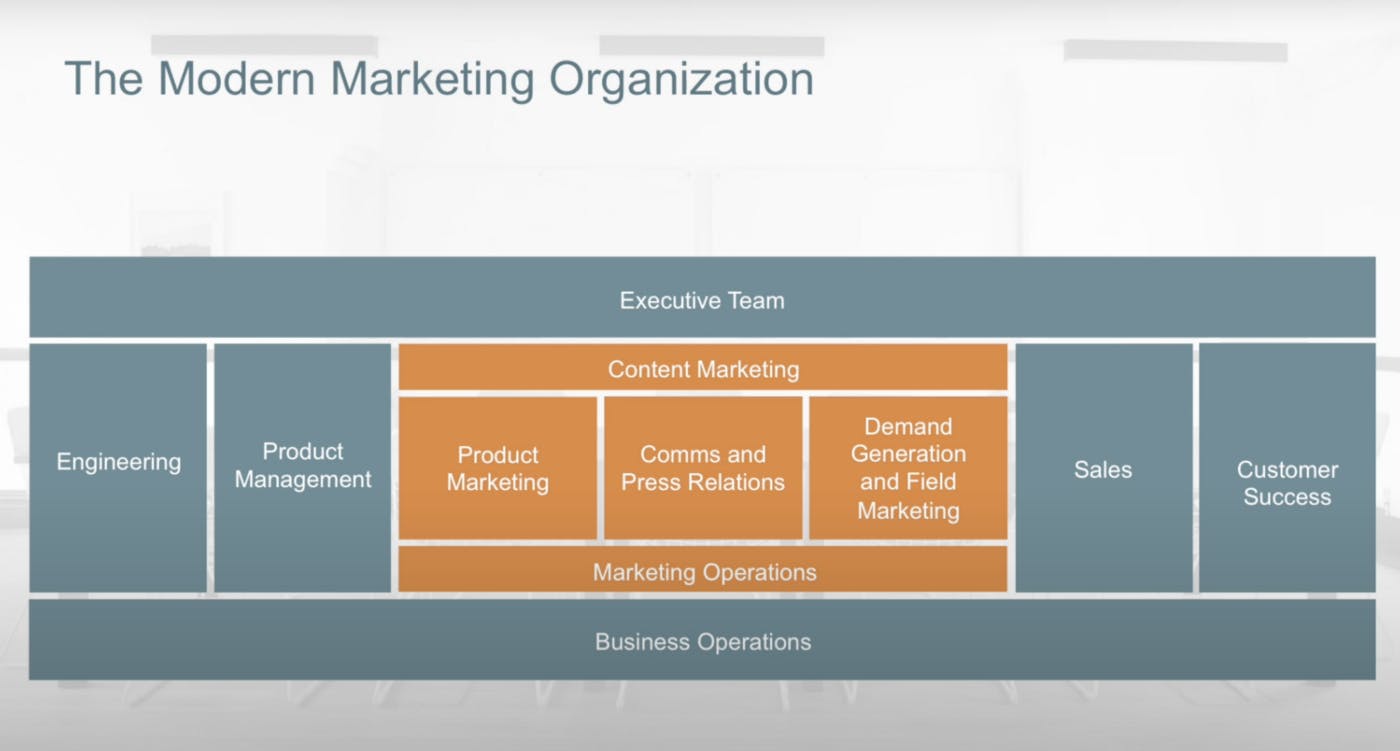
These product marketing and demand gen hybrids are extremely hard — if not impossible — to find. Hence my advice is to opt-in on finding a product marketing individual first.
There are two crucial parts for a first product marketing hire in an early-stage PLG startup to truly internalize:
- Part 1 is to get as close to the customer/user as you can. The goal is to know the market (this includes competitors) and the user as well as possible. Every single product marketer I know is sitting in on sales or customer success calls, doing research interviews with existing customers, investigating prospects we lost, and talking to people for whom the product is never even under consideration. If in a time crunch, sales people/renaissance reps can also do this, but you want to follow that up with more robust research designed with product management and demand-gen, as sales will only capture bottom of funnel info secondhand for you.
- Part 2 is to build content that demonstrates specialized knowledge. The goal here is to take that knowledge from Part 1 and demonstrate that you can actually turn it into something that can support other teams, at scale. The scale part is important — sales or content marketing can deliver content, too, but normally they’re looking to product marketing for anchor content to customize for a particular customer, or a whitepaper, or an article. No one likes working with a product marketer who can’t make a deck, write a decently technical whitepaper or blog post, assemble a messaging document, or design and build a sales enablement curriculum. As an early product marketing hire, it’s best if you can demo your own product — and the less technical it is, the more you’ll be expected to do it. For example, analytics or productivity solutions would likely be within a non-technical product marketer’s capabilities, while something like a managed database or DevOps tools requiring integrations with a wide set of solutions means being able to work with a product manager, technical marketing, or sales engineer.
Content is king
Content and copywriting is sales at scale. But how do you define good copy? Here’s my list.
Good copy is:
- Clear
- Specific
- Understandable
- Relatable
- Useful
- Filled with examples & proof
Content and community go very much hand in hand. I think content is hands down the number one channel to build any business today. B2B. B2C. Any business. Because the best marketing is expertise — you are an expert in an area you can teach your customers to achieve a desired result or to make a decision — and do that first through content.
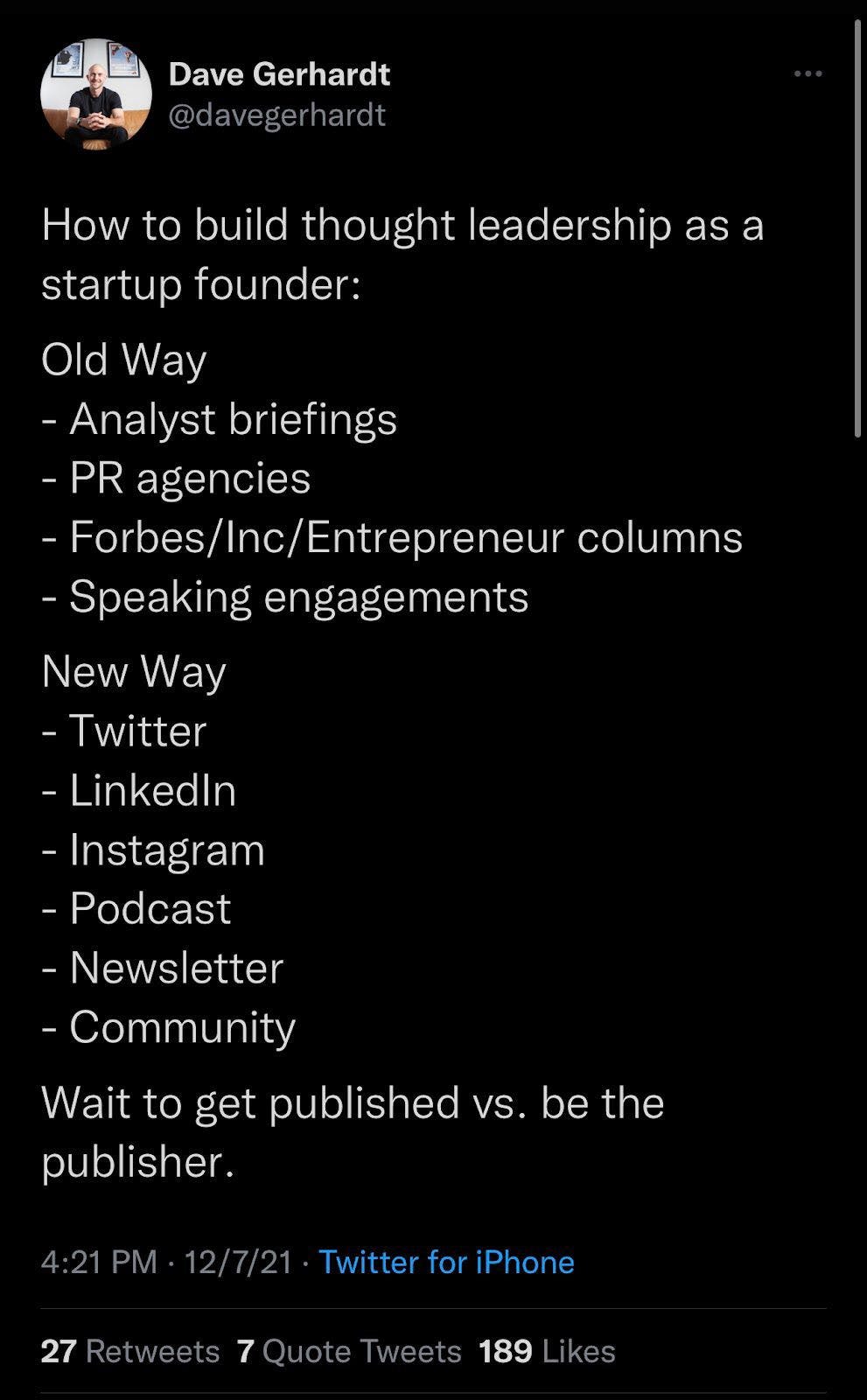
As noted by Dave Gerhardt: don’t build a marketing team — build a media company for your niche. This is exactly what we see successful startups in e.g. the data and developer tooling space doing.
Don’t forget the early importance of design and UX research
As an addition to focusing on content and product marketing, I’d strongly recommend bringing a designer onto the team early on if you’re deploying a PLG motion, either full-time or as a freelancer in the beginning. UI/UX and design are absolutely crucial for creating the best possible product experience, especially as the product is your #1 sales rep. Hire a UX designer before a business development person. I see time and time again in early-stage PLG startups how design is imperative but undervalued. You will get more leverage faster by having a top-notch designer involved early on.
🏟️ PLG = Community
Janessa Lantz, VP of Marketing at dbt Labs (a startup that has reached a valuation of $1.5B and built one of the most vibrant communities in the data infrastructure space) recently said that she will never go back to doing marketing at a company that doesn’t also invest deeply in community. As Janessa points out:
“Marketing adds scale / reach to community efforts, community brings authenticity / human perspective to marketing. It’s a perfect match.”
Your goal should be to first build a “local” community (meaning of local in this context: a small community that you interact with extensively in a non-scalable way but that can be stationed anywhere in the world) and once you nail product-market fit a global community of technical users through various scalable joint initiatives (meetups, events, content co-creation, evangelist programs, etc), develop advocates & evangelists, and make it “cool” to use your product. One could call this “community-led growth”. Good examples of companies at different stages that have succeeded with this are dbt Labs (series C), Databricks (pre-IPO) and MongoDB (public).
Especially dbt Labs exemplifies well the power of community and starting with a small but highly engaged community before scaling globally. For them, the hockey stick truly started in Q2/Q3 of 2019, 3 years after they launched their MVP. The rest is as they say history (the company raised their A, B and C rounds within 18 months in 2020 and 2021 from top VCs such as a16z and Sequoia). The moat of community is exceptionally strong. Savvy investors understand this — and that consistency and patience are needed during the early days.
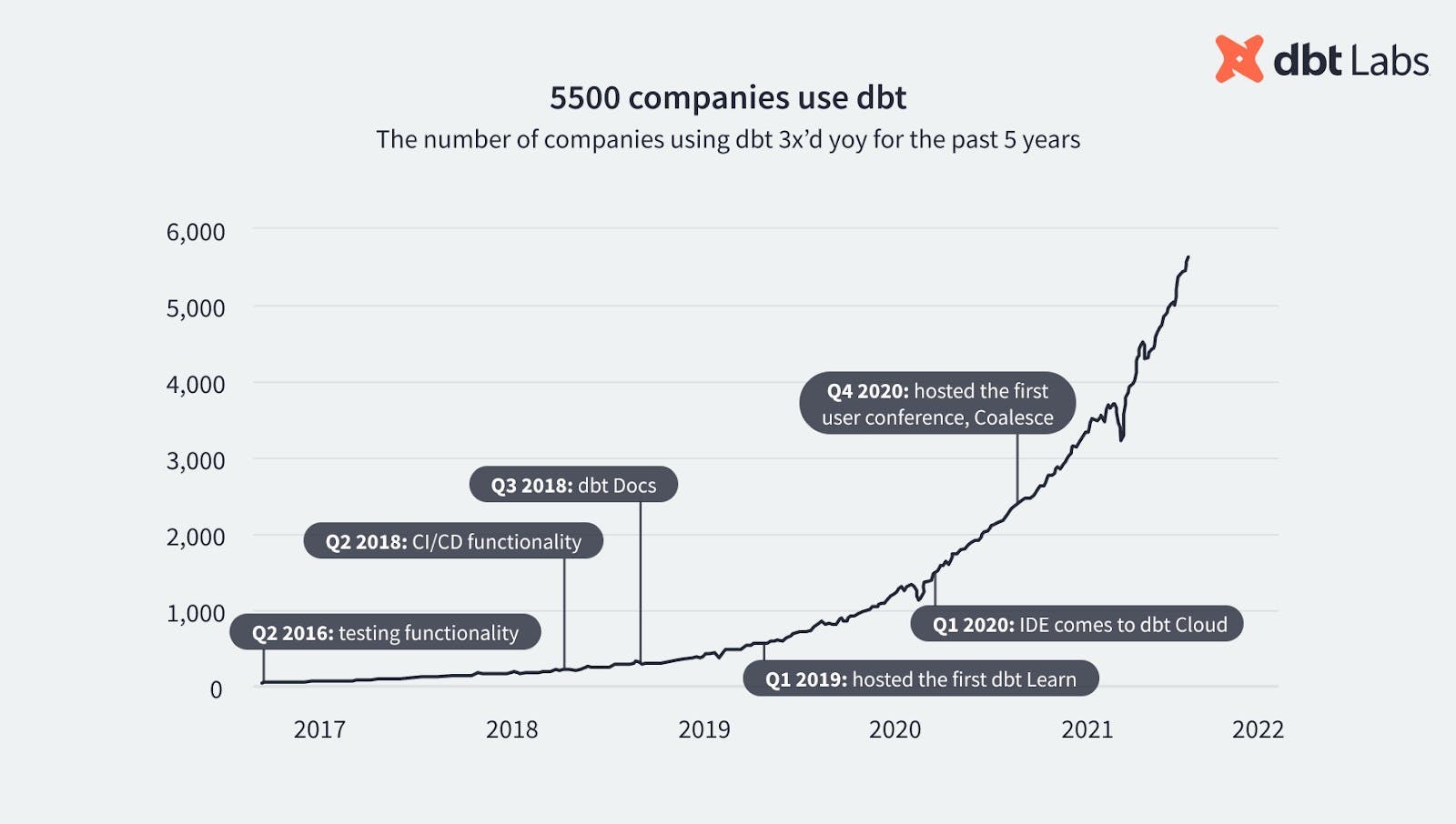
Something that dbt Labs has done extremely well is positioning themselves as experts in the broader data infrastructure market beyond their own niche.
In PLG and community building thought leadership becomes especially pivotal when you have technical target users. Developer and engineering products inherently require community building and building credibility. When you are building a user community (especially a technical one) you have to focus on what your users want, not just about what your startup sells. It’s important to situate your solution into the broader context.
Be the expert in your category not just of your tool or platform.
Community is clearly an incredible multiplier on a PLG strategy. This has lately been manifested through various community acquisitions in the space by established players:
- Pendo.io acquired Mind the Product
- HubSpot acquired The Hustle
- Stripe acquired Indie Hackers
- Outreach acquired Sales Hacker
- DigitalOcean acquired Scotch.io
- Zapier acquired Makerpad
- Semrush acquired Backlinko
- Gainsight acquired inSided to enable community-led growth
A community strategy can be applied to nearly every PLG business. In an early-stage PLG startup, the first product marketing hire should definitely also engage in community-building activities together with the founders and other core team members. A dedicated developer advocate should be brought in once you have the first signs of product-market fit and have managed to engage with a small community in a non-scalable way.
Expertise, champions and influencers
The way to build a brand as a B2B business today is to show your potential customers you are the expert. Expertise is the best ingredient you can have in your marketing stack today. And while you’re doing this, you should aim for a GTM flywheel that creates champions within your community.
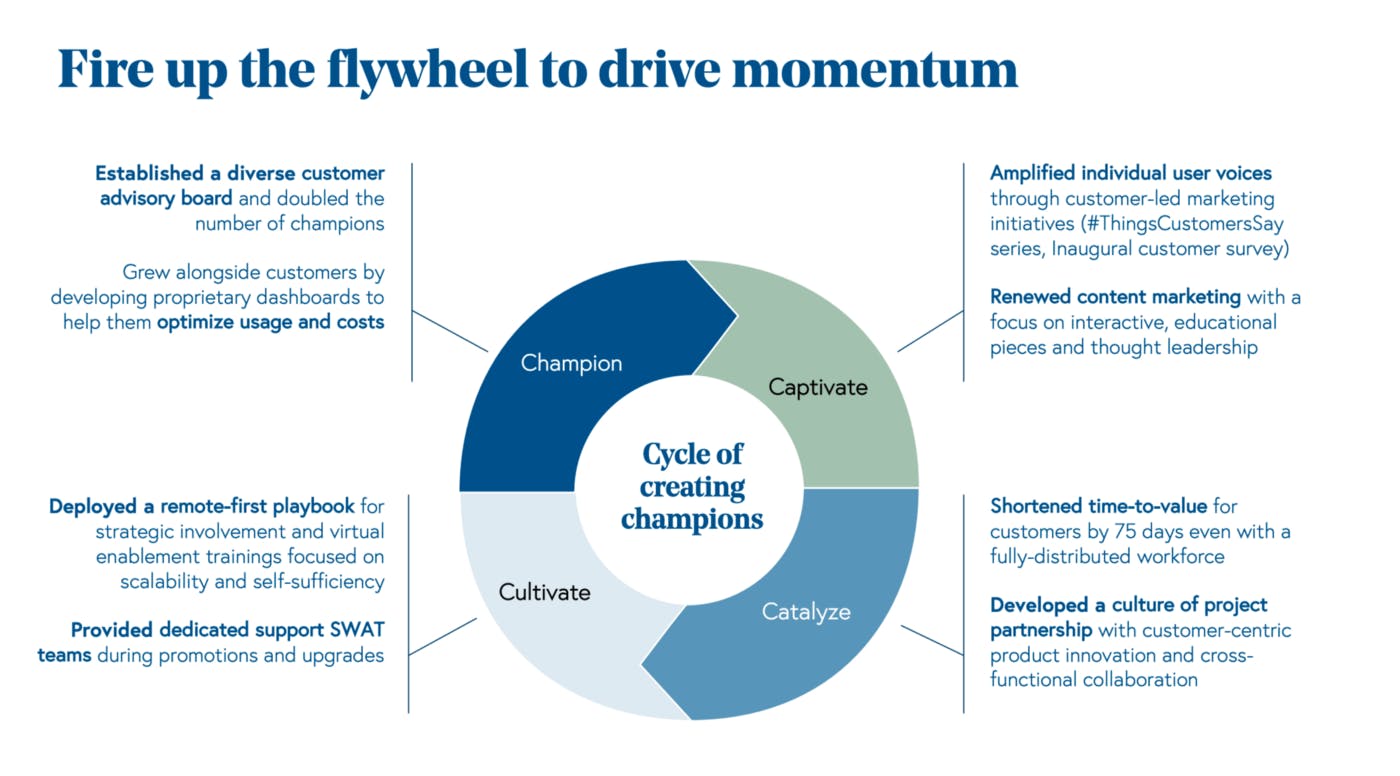
One of the key trends within B2B SaaS and PLG — which is still very much underutilized — is strategic influencer marketing. Many marketing leaders for technical B2B SaaS companies still shake their heads when I mention influencer marketing. But “influencer” just means: who do your potential customers and users trust. And that’s why B2B can have “influencers” too.
⚡ Lightning in a bottle
Last but not least, PLG means having the user have a “WOW” moment within 30min to 3h of adoption depending on the product and category (products with a less technical audience and use cases need a faster “wow” than products with highly technical applications and integrations).
Or what Frank Slootman, Chairman & CEO of Snowflake, calls a “lightning in a bottle” moment. Ease of implementation is crucial for this.
Time to value is a key metric that every PLG startup should track.
Most fundamentally: every PLG strategy and Modern GTM starts with a deep understanding of users/buyers’ problems and background.
📚 Recommended further readings
If you found this article interesting, I strongly recommend that you have a look at:
🗂️ Unusual Venture’s comprehensive Modern GTM guide and
💳 a16z’s article about bottom-up pricing and packaging (they’ve also gathered a database of 50 startups bottom-up pricing strategies)
🎥 Martin Casado Growth, Sales, and a New Era of B2B
